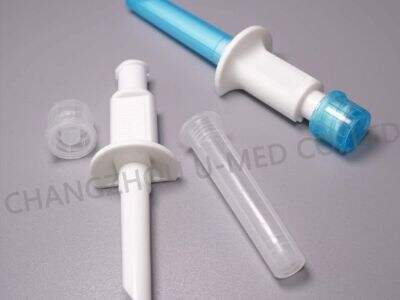Eine IV-Kanüle ist ein medizinisches Werkzeug, über das Ärzte und Schwestern Medikamente und Flüssigkeiten an Patienten verabreichen. Eine IV-Kanüle besteht aus mehreren Komponenten, die zusammenarbeiten, um ihre Aufgabe effektiv auszuführen. Von Zeit zu Zeit können diese Teile Probleme verursachen, die potenziell den Patienten gefährden. Es ist essenziell, dass Gesundheitsfachkräfte diese Probleme bei IV-Kanülenkomponenten im Auge behalten, um die Sicherheit der Patienten zu gewährleisten.
Entdeckung von Fehlern in IV-Kanülenschläuchen
Der Schlauch, durch den das Medikament oder die Flüssigkeit in den Körper des Patienten geleitet wird, ist eine entscheidende Komponente der IV Kanüle .Manchmal kann dieser Schlauch Defekte wie Löcher oder Risse aufweisen, durch die er lecken könnte. Um Löcher oder Engstellen im Schlauch zu finden, können Ärzte sanft mit den Fingern darüber fahren, um Knoten oder Brüche zu ertasten. Wenn sie welche finden, sollten sie diese Infusionskanüle nicht verwenden und stattdessen eine neue, sichere holen.
Prüfung der Spitze der Nadel
Ein weiteres entscheidendes Bauteil für die Infusionskanüle ist die Nadel, die in die Vene des Patienten eindringt, um Medikamente zuzuführen. Die Nadel sollte scharf genug sein, um die Haut zu durchdringen, ohne zu viel Schmerz zu verursachen. Ärzte können prüfen, ob die Nadel scharf ist, indem sie sie leicht in ihren eigenen Finger drücken. Eine stumpfe oder verbogene Nadel kann dem Patienten Schmerzen bereiten. In einem solchen Fall dürfen sie die iV-Katheters und sollten sie durch eine neue ersetzen.
Suchen Sie nach Leckagen im Infusionskanülenanschluss.
Das Zentrum der IV-Kanüle ist der Verbindungspunkt der Komponenten. Und wenn es im Hub eine undichte Stelle gibt, könnte das Medikament nicht richtig in die Vene des Patienten fließen. Gesundheitskräfte können auch nach Leckagen im Hub suchen, indem sie ihn mit ein wenig Wasser füllen und nach Tropfen Ausschau halten. Bei einem Leck sollte diese Kanüle nicht verwendet werden. hand IV-Kanüle vene webseiten und eine neue nehmen, um sicherzustellen, dass das Medikament richtig verabreicht wird.
Prüfung der Katheterschwingen auf Brüche
Die Schwingen des IV-Katheters an der IV-Kanüle sind die kleinen Plastikteile, die helfen, die IV-Kanüle am Körper des Patienten zu sichern. Wenn diese Schwingen Risse oder Schäden aufweisen, kann die IV-Kanüle nicht richtig fixiert sein und könnte rutschen oder sich bewegen. Medizinische Fachkräfte können sanft an den Schwingen ziehen, um nach Rissen zu suchen: Wenn sie stabil erscheinen, gibt es keine Risse. Bei Rissen sollte die IV-Kanüle nicht verwendet werden, und man sollte eine neue nehmen, um Unfälle zu vermeiden.
Sicherstellen, dass alles richtig zusammengebaut ist
Schließlich sollten Gesundheitsmitarbeiter sicherstellen, dass alle Teile der IV-Kannula richtig montiert sind, bevor sie an einem Patienten verwendet wird. Das bedeutet anscheinend, dass das Schlauchwerk fest am Aufsatz befestigt ist und die Nadel sich dort befindet, wo sie hingehört. Wenn ein Teil nicht richtig montiert ist, könnte es funktionieren, indem es zum Beispiel verhindert, dass das Medikament vollständig fließt. Indem medizinisches Personal sicherstellt, dass alles richtig zusammengebaut ist, kann es dazu beitragen, die Sicherheit der Patienten zu gewährleisten.

 EN
EN
 AR
AR BG
BG HR
HR CS
CS DA
DA NL
NL FI
FI FR
FR DE
DE EL
EL HI
HI IT
IT JA
JA KO
KO NO
NO PL
PL PT
PT RO
RO RU
RU ES
ES SV
SV TL
TL ID
ID LT
LT UK
UK VI
VI HU
HU TH
TH TR
TR AF
AF MS
MS GA
GA HY
HY BN
BN LO
LO LA
LA NE
NE KK
KK